The logistics sector is undergoing a profound transformation, spurred by evolving consumer behaviors, technological advancements, and a surge in delivery vehicle traffic. In response, third-party logistics (3PL) providers are swiftly adapting to a new reality where traditional practices are no longer sufficient. As the global 3PL industry hurtles toward a predicted valuation exceeding $1.3 trillion by 2026, three pivotal factors are steering the course for modern 3PL providers in 2023.
Changing Consumer Expectations
The seismic shift caused by Amazon’s introduction of one-day shipping in 2019 has reverberated across the retail and logistics landscapes. The era of “instant gratification” has reshaped consumer expectations, making fast and free deliveries the new norm. In the United States, the speed of delivery and shipping cost considerations now influence nine out of 10 purchasing decisions.
However, the convenience of quick-ship practices has come at an environmental cost, with increased vehicle traffic, carbon emissions, and packaging waste. Consumers are now more conscious of the long-term impacts of their choices, leading to a significant uptick in sustainability awareness. Over 60% of consumers have altered their consumption habits to embrace more sustainable practices, and a staggering 88% express loyalty to brands prioritizing sustainability.
As the industry moves forward, 3PLs must champion sustainability initiatives. Electric delivery fleets, carbon offsets, and recycled packaging are just the beginning. By collaborating with brands and aligning end-to-end logistics services with sustainability goals, 3PLs can play a pivotal role in creating a greener future for the shipping industry.
Building Supply Chain Resiliency
The globalization of supply chains over the past three decades has exposed companies to a myriad of risks, from extreme weather events to labor disputes and supplier disruptions. Recent events, including the pandemic and climate change impacts, have underscored the need for supply chain resiliency and diversification.
To fortify supply chains, companies are leveraging data-informed predictions and real-time demand analysis. These tools offer visibility into factors ranging from weather patterns to seasonal shopping shifts, enabling swift responses to changing conditions. Additionally, surge-ready stockpiles, order orchestration, and end-to-end logistics control with 3PL partners are becoming essential components of resilient supply chains.
In response to excess inventory challenges, brands are turning to order orchestration and distributed logistics networks. While optimizing fulfillment time through multiple warehouses incurs initial costs, collaborating with a 3PL allows brands to efficiently manage their order fulfillment process from placement to delivery, including returns.
Utilizing Modern Technologies
Embracing advanced technologies is a common theme across industries seeking to boost productivity. The 3PL sector is no exception, incorporating artificial intelligence, machine learning, technology platforms, and robotics to enhance operational efficiency.
Persistent supply chain challenges and labor constraints have prompted 3PLs to adopt automation and robotics technologies. From data-driven order processing to warehouse and transportation technologies, these advancements improve communication and increase visibility for logistics providers, brands, and consumers.
Robotic technologies are revolutionizing warehouse and fulfillment operations, automating manual tasks such as picking, sorting, and packaging. The rise of Robots as a Service (RaaS) allows 3PLs to benefit from improved safety and enhanced fulfillment speeds without the prohibitive costs of ownership. Moreover, the use of exoskeletal suits in warehousing is enhancing worker well-being, reducing fatigue, strain, and physical risks.
The 3PL industry in 2023 is navigating a landscape defined by changing consumer expectations, a focus on supply chain resiliency, and the widespread adoption of modern technologies. Success in this dynamic environment requires 3PL providers to not only adapt but also lead the way in shaping a more sustainable, resilient, and technologically advanced future for logistics.











